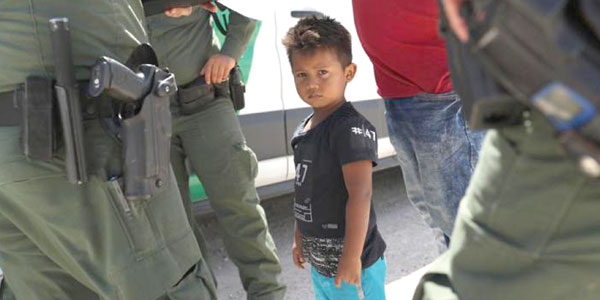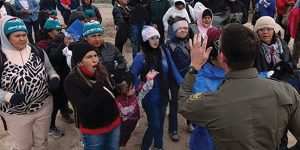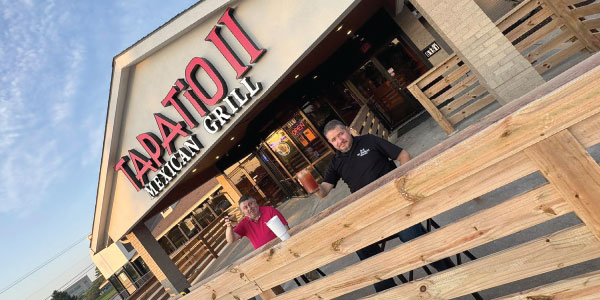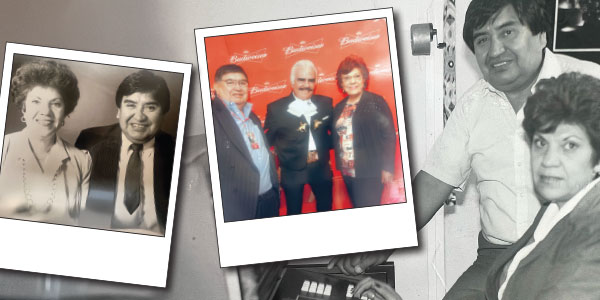
They arrive alone, mostly from Honduras, Guatemala or El Salvador. Not yet 18 years of age, they come to the United States to join their parents, siblings, uncles or distant relatives whom they hardly know. Having crossed though Mexico, they are exhausted. They risk being harmed by human traffickers, and if they are girls, that risk is higher. They have survived weeks, and sometimes months, of abuse, hunger and cold, while dreaming of a better life in America.
But when these children arrive here, they are put behind bars, or in icy rooms, or in tents in the middle of the desert. And their idea of a friendly country one that would welcome them with open arms and protect them from the violence and hunger they suffered back home begins to erode.
These migrant children are arriving at the southern U.S. border daily. They surrender at entry ports or cross the border illegally, then stand passively when border patrol agents come to collect them. Almost all have a relatives phone number written on their hands or feet, on the sole of a shoe or their underpants, or engraved in their memories after having repeated it so many times.
Last month, 12,800 migrant children were in U.S. custody, according to a report in The New York Times, a drastic increase from the 2,400-plus kids who were in custody in May 2017. These children had typically spent a couple months in shelters run by the Department of Health and Human Services, until they were placed with relatives or sponsors. But since Immigration and Customs Enforcement officials began using these children as bait, to lure undocumented parents and arrest them, fewer parents have been likely to come for them, or have taken much longer to do so.
So many minor border crossers are in custody that there is less and less room available for them in shelters. Now some are being sent to a huge tent camp in the desert near Tornillo, Texas. Up to 3,800 kids will be housed there, without schooling, recreation or legal assistance. Many of these children, according to reporting in the Times, are moved to these tents at night, without warning, to prevent them from running away.
The beige-colored tents in Texas remind me of the tent city where the infamous Sheriff Joe Arpaio sent prisoners in Maricopa County, Arizona. Temperatures in this part of Texas range from suffocating heat during the day to freezing cold at night. Yes, the tents are air-conditioned, but they are nothing like summer camp, as some government officials claim.
The government labels these children unaccompanied minors, as if they were flying somewhere on an airline by themselves. The euphemism conceals a cruel policy that is also a violation of their human rights. They are not just ordinary immigrants. They are children seeking refuge, who should be given special rights because they have escaped from conflict zones.
But this is how President Donald Trumps administration treats Central American children. The government places them in tents, alone, in the desert, or separates them from their parents after theyve crossed the border, as was the case recently with over 2,500 children. The administrations so-called zero tolerance policy led to the arrest of toddlers who could not communicate with their parents. And 136 still havent been reunited with them.
This double standard is unbearable. What would happen if, suddenly, American kids were taken away from their parents after entering Mexico, Honduras, Guatemala or El Salvador? Can you imagine how the United States would react if neighboring countries put thousands of American children in tents, by themselves, for 50 or 60 days?
Not long ago, near McAllen, Texas, I approached a 5-year-old Honduran boy who had been arrested along with his mother by Border Patrol agents. The boy was tired and scared. Naïvely, I asked him what his parents had told him about the United States before he left his home. That it was very nice, he told me, with a shy smile.
This kid had no idea what awaited him.
______________________________________________________________________________________________
Niños Solos
Llegan solos. Sobre todo de Honduras, Guatemala y El Salvador. No han cumplido, ni siquiera, los 18 años de edad. Vienen a Estados Unidos para reunirse con sus papás, con sus hermanos, con sus tíos, con familiares lejanos que apenas conocieron. Llegan muertos de cansancio luego de cruzar el México bravo. Si son niñas, el riesgo es mucho mayor. Son semanas, y a veces meses, de coyotes, maltratos, hambre, frío, durmiendo en el piso y soñando con una vida mejor.
Pero cuando esos niños llegan a Estados Unidos los meten en rejas o en cuartos que se sienten como hieleras, o en tiendas de campaña en medio del desierto. A veces les dan órdenes en un idioma que no es el suyo. Y su idea de un país amable — que los iba a recibir con los brazos abiertos y que los protegería de la violencia y el hambre que sufrían en casa — se empieza a desinflar.
Muchos de estos niños solos están llegando a la frontera sur de Estados Unidos. Se entregan en los puertos de entrada o cruzan ilegalmente y se quedan parados, sin resistirse, cuando los ven los agentes de la patrulla fronteriza. Casi todos llevan un número de teléfono apuntado en la palma de la mano, en un pie, en la suela del zapato, en el calzoncillo o amartillado en el cerebro a punta de tanto repetirlo.
En septiembre pasado había 12.800 de estos niños solos en custodia del gobierno de Estados Unidos, según investigó The New York Times. Es una cifra récord. Muchos más de los 2.400 que cuidaban en mayo del 2017. Estos niños suelen estar un par de meses en albergues del Departamento de Salud y Servicios Humanos hasta que se los entregan a sus familiares o a un adulto responsable de su cuidado. Pero como el servicio de inmigración (o ICE) ha usado a estos niños como señuelos para arrestar a padres indocumentados, a veces no los van a recoger o se tardan mucho.
Son tantos niños solos que ya no caben en los albergues contratados a empresas privadas por el gobierno federal. Y por eso ahora los están enviando a un gigantesco campo lleno de carpas en la población desértica de Tornillo, Texas. Ahí cabrían hasta 3.800 niños. Pero sin escuelas, centros recreativos o asistencia legal. A muchos de estos niños, reporta The New York Times, los trasladan a estas carpas de noche y sin previo aviso para que no se traten de escapar de sus albergues temporales.
Las carpas color beige en Texas me recuerdan el “tent city” donde el odiado sheriff Joe Arpaio enviaba a sus prisioneros en el condado de Maricopa, en Arizona. Las temperaturas en esa parte de Texas pueden fluctuar desde un calor asfixiante durante el día hasta un frío que te hace temblar de noche. Sí, las carpas tienen aire acondicionado, pero no son campamentos de verano, como algunos funcionarios del gobierno quisieran hacernos creer.
El gobierno les llama a estos niños “menores no acompañados”, como si fuera una aerolínea. Este eufemismo esconde una política cruel y violatoria de los derechos humanos. No se trata de simples inmigrantes. Son, en realidad, niños refugiados con derechos especiales por estar huyendo de zonas de conflicto.
Pero así es como el gobierno del presidente Donald Trump trata a los niños centroamericanos. Los pone en carpas, solos, en el desierto. O los separa de sus padres cuando entran a Estados Unidos, como ocurrió recientemente con más de 2.500 niños. La llamada política de “cero tolerancia” llevó a detener a niños y bebés que no podían comunicarse con sus padres. Y 136, todavía, no han sido reunificados con ellos.
La doble moral es insoportable. ¿Qué ocurriría si, de pronto, niños estadounidenses fueran separados de sus padres al entrar a México, Honduras, Guatemala o El Salvador? ¿Se imaginan cómo reaccionaría Estados Unidos si alguno de sus países vecinos pusieran solos y en carpas a miles de niños estadounidenses durante 50 o 60 días?
Hace poco, cerca de McAllen, Texas, me le acerqué a un niño hondureño de apenas 5 años que había sido detenido junto a su madre por la patrulla fronteriza. Estaba cansado y asustado. Ingenuamente le pregunté qué le habían dicho sus papás, antes de salir de su casa, sobre Estados Unidos. “Que era muy bonito”, me dijo, con una media sonrisa.
Ese niño, todavía, no sabía lo que le esperaba.










